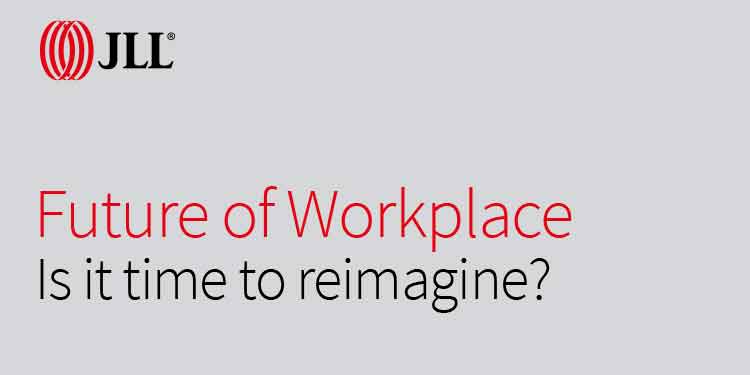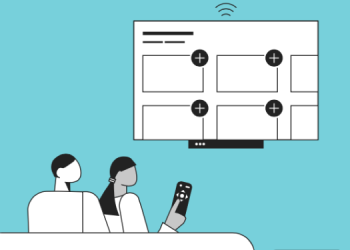- 66% of employees in India immediately shifted to working from home after the outbreak of the pandemic
- 30% of Indian working population has said that the lockdown has given them an enhanced opportunity to balance their work and life
- Health and wellness to be the key motivator for employees to re-enter office spaces
- 76% of millennials will consider a company’s social and environmental commitments before deciding to work there
- Workplaces would also witness new techniques and ways of operating, collaboration and engagements
Mumbai: While the likely reality is that working population will eventually return to a collective workplace, but by then, the workplace would have drastically changed beyond previously imagined. As the country unlocks and “working from office” gains back the momentum, many companies are looking forward to making the necessary changes at their offices.
New COVID-19 protocols will require greater physical separation in workplaces via spatial, physical, and temporal means. JLL, the country’s largest real estate consultancy firm has come out with a whitepaper ‘Future of workplace: Is it time to reimagine?’ that deep dives into how the office, as we know it today, will transform into a more greener, healthier and sustainable place to re-welcome its employees post COVID-19.
This report highlights workplace solutions needed to cope with the pandemic as employees begin to migrate back to offices. It discusses five major aspects of the “Future of Work” and how it will change with respect to the changing paradigm of businesses. The key to the transformation is spacing: Workstations will be spaced further apart, conference rooms will be depopulated, space-dividing partitions erected, and staff issued rotating schedules for some time now.

“While we all know that work from home is an interim solution in the current situation, it has its own drawbacks including challenges like the feeling of isolation and lack of face to face connectivity with our colleagues. It is very difficult to replicate an office environment and the collaboration opportunities in a WFH model. Our survey shows that as much as 41% of employees are missing the professional environment of a workplace. Also, workplace design is increasingly gaining importance in the current context and will be influenced by the fact that people shape the spaces they occupy, with focus on human experience, innovation in technology, wellness and sustainability,” said Ramesh Nair, CEO and Country Head, India, JLL.
Workplace design will see a shift over time due to COVID-19 with a mixed response from occupants. While telecommuting will become more mainstream, leading companies across the globe will be seen embracing flexible workplace arrangements and taking preventive measures to ensure social distancing and good hygiene, highlights the report.
(Re) entry
As India fights COVID-19, business leaders are planning their ‘return to work strategies.’ There will be changes that employees will witness as they reenter their offices. De-densification, reconfiguration, enhanced seating plans and collaboration devices, are some of the measures that will be adopted for re-entry.

“Most space planners, architects and product providers are proactively thinking ahead of time to bring in new concepts and technologies to provide a healthier and more sustainable workplace for the future. Occupiers have embraced the preliminary phase to accelerate the short-term transition and have started partnering with organizations like JLL to plan a safer and informed re-entry at the workplace to ensure social distancing and workplace wellness,” says MV Harish, Managing Director, PDS, India.
(Re) imagine
A phase of acceptance where employees will be introduced to new norms of work and workplace such as providing flexible designed spaces, density-the deciding factor for office design, 90 degree rotation of desks and workstations to be incorporated, wide agile practices, health and well-being of employees and contact free spaces.
Future of re-imagine
Use of smart materials, flexible arrangement of furniture, hub and club model, employee experience, digital ecosystems, holistic environment will be the focus of the future workplaces.
What is next for workplace?
The future of workplace pivot around the five dimensions which will propel the new workplace designs. The incorporation of these aspects at workplace will corroborate the effect of the pandemic.
1) Human Experience: The impact an organization casts on its people is beyond its tangible domains, which results in larger engagement, professional empowerment and a sense of fulfilment.
2) Health and Wellness: Health and wellness will be key motivation for the employees to re-enter the office spaces and organisations.
3) Sustainability: Companies will continue to focus on greener spaces and sustainable building will continue to be in vogue.
4) Health and Safety: Periodic sanitisation of workplace, use of anti-microbial coatings, and minimal use of touch prone surfaces will be encouraged.
5) Digital Drive: Companies will start investing in contactless technologies to reduce disease transmission. Standalone technology will replace by integral solutions that connects building facilities with the occupier’s premise.
The post-COVID world is not simply about measures that focus on employee wellness. It is also about efficiency, speed, and cost-effectiveness. Organisations need to optimise the existing spaces by making meaningful moves. Ultimately, the time spent optimising space will have the deepest impact.
The complete report can also be accessed here.

















